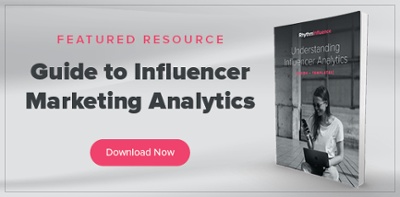Influencer marketing is a living organism. Every few months it evolves and grows into a new, more advanced form of its old self, and strategists are left running around trying to navigate these changes and include them in their progressive marketing campaigns. The latest evolution of influencer marketing is the pivot to virtual reality influencers.
Virtual reality software has been in use for years now, technically dating back to the 1800s when Sir Charles Wheatstone invented the stereoscope that allowed him to create three-dimensional images. It wasn’t until 1975 that VR looked and felt the way we associate with VR today, when Myron Krueger's VIDEOPLACE, the first interactive VR platform, debuted at the Milwaukee Art Center. Jump to 2016 and the world has hundreds of companies developing their own VR products, testing out their own headset models in a mission to create the most optimal way to mass-market virtual reality for the public.
In 2019, Facebook did just that with the release of their standalone headset, the Oculus Quest— which proceeded to sell out in many locations and succeed in officially introducing VR capabilities to the general public. In response, Forbes describes 2019 as The Year Virtual Reality Gets Real, and just like that virtual reality is no longer a goal, but a household product and a new tool that can be used to solve new problems. Enter: the creation of virtual reality influencers to further evolve influencer marketing as we know it.
What are virtual influencers and what do they mean for influencer marketing?
Virtual influencers (also known as CGI influencers) are exactly what they sound like— completely fictional and completely computer-generated, AI-powered “people” who have all of the characteristics of real Influencers, topped off with an imitation personality and what appears to be the body of a human. While typical Influencers have unique interests and styles, and they are adept at interacting with their audiences in natural ways that show off their custom voice, all virtual influencers have a lot in common with each other.
They are all conventionally attractive, they have conventionally good personalities, and they are all conventionally talented. Factors that are due in large part to the fact that the primary thing all virtual influencers have in common is that they are not real and were instead created by computers to be the ideal Influencer. A Disney Channel movie from 2004 called Pixel Perfect introduced this concept, with a holographic rockstar-turned what we now know as an Influencer who captured the hearts of tweens around the world.
In more recent times, we have Lil Miquela. In 2016 Lil Miquela appeared on Instagram with no warning and seemingly out of nowhere. For months the public debated where she came from, who was behind her creation, and most importantly— what does she want from us? As these things go, the truth of Lil Miquela was ultimately less outlandish than most assumed (no, her creation is not the first sign of an imminent alien invasion) and it was revealed that she was created for marketing purposes as the first virtual influencer.
Source: Vogue
While Lil Miquela’s creators have revealed themselves to be Trevor McFeries and Sara Decou after years of anonymity, knowing her origin doesn’t detract from the wonder and success that follows Lil Miquela wherever she leads. Since her creation over five years ago, the world’s most famous virtual influencer has attracted 3 million Instagram followers, released several pop singles, been named to Time’s 25 Most Influential People on the Internet list, and been the face of brands such as Chanel, Burberry, and Fendi.
As a brand ambassador, Lil Miquela is fulfilling the purpose of her creation. As the first Influencer of her kind, Lil Miquela has paved the way for virtual influencers (and their creators) to follow in her path. And she did just that, since her creation and instant fame, brands and organizations have created their own virtual influencers in an effort to truly make virtual reality the future of marketing.
Source: @Balmain on Instagram
Balmain was quick to jump on the high fashion virtual influencer train and take it to the next level with the creation of a “virtual army” of models to walk the runway, appear in ad campaigns, and be the face of the brand on social media. For Balmain’s creative director Olivier Rousteing, the decision to go virtual is all about relevance. He told the New York Times in 2018, "We need to change. We need to push boundaries. We need to talk to the new generation. We need to make fashion relevant.”
Source: New York Times
But by 2019 some brands were already beginning to think that virtual influencers had been taken too far. When KFC created their virtual Colonel Sanders, it was received as a creation designed to mock the very stuff it was made out of. By redesigning their mascot into a younger, trendier, computer-generated version of itself KFC was not only telling the public that they were a brand with staying power in modern times, but they also took it as an opportunity to take some digs at the entire virtual influencer market.
How do virtual influencers benefit brands?
So, what do virtual influencers mean for brands? Does this trend really have (virtual) legs? And if so, should every brand out there take this as a sign to partner up with a tech development company to start designing your own robotic ambassador today? Before you pick up the phone to make that call, let’s take a closer look at what virtual influencers are actually able to achieve for their brands.
First, let’s take a quick look at the virtual influencer market by the numbers:
- Virtual influencers have almost 3X the engagement rate of human Influencers.
- The core audience of virtual influencers is women between 18-34 years old, making up 44.97%.
- Another large part of the audience base of virtual influencers is people aged 13-17 making up 14.47%, which is double the young audience of a typical human Influencer (7%).
- However, 48% of virtual influencers have negative follower growth, indicating that a substantial percentage of their audience is either bots or uninterested followers.
- 31% of virtual influencers have TikTok accounts.
While it’s clear from these numbers that virtual influencers are having an impact on the industry, it’s unclear whether or not virtual reality has a permanent place in the influencer marketing industry. For emerging brands looking to make a splash and even a few headlines, partnering with a VR brand ambassador is a surefire way to get noticed in a crowded field.
Additionally, in a world where brand health is so important, partnering with an Influencer whose behavior you can completely control has its perks. Can robots get canceled? If not, virtual influencers may be the first wave of brand ambassadors that companies don’t have to fear will ruin their image with an off-color Tweet.
Ultimately, the virtual reality industry is only growing more advanced with each passing day. For brands looking to appear hyper-relevant and intune with younger audiences, partnering with a virtual influencer could give you the brand awareness boost you are looking for. But for brands with a mission to continue creating authentic content and foster real connection with their audiences, continuing to partner with human influencers (also known as Influencers) may provide you with a more lasting relationship with your audience.
And whether you’re partnering with Influencers that are synthetic or human, you’ll want to vet them before launching your campaign, to help you out here is How to Manage Influencers: The Influencer Vetting Process
Want to know what all of the benchmarks and analytics that the VR Influencers need to meet to be successful for your brand? Download our guide to influencer marketing analytics.





SUBMIT YOUR COMMENT